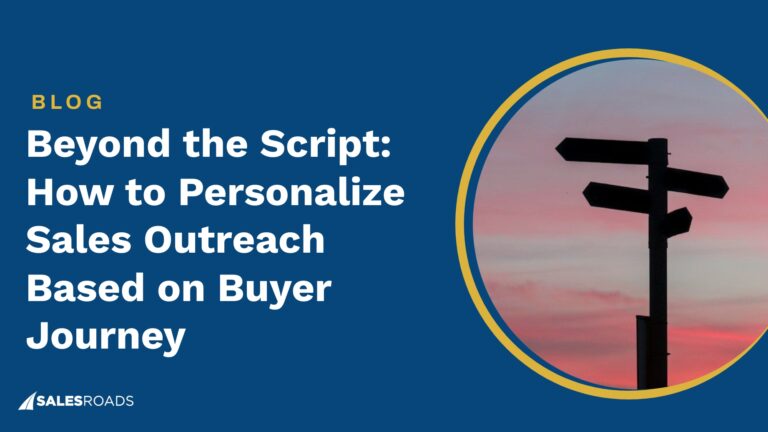The success of a business hinges significantly on the effectiveness of its lead generation campaigns.
These campaigns are more than just a method to attract potential clients; they are the vital arteries that funnel the lifeblood of new opportunities and growth. However, crafting a successful lead generation campaign is not without its challenges.
This article delves into the common pitfalls that businesses often encounter when crafting a lead generation campaign, offering effective strategies to navigate these challenges effectively.
Common Pitfalls in B2B Lead Generation Campaigns
B2B lead generation campaigns are pivotal in steering a business toward its sales objectives. However, certain pitfalls can derail these efforts, leading to suboptimal outcomes:
Overlooking the importance of target audience research
Failing to conduct thorough target audience research is a critical misstep in B2B lead generation. Understanding your audience is not just about knowing who they are but also comprehending their needs, challenges, and decision-making processes.
Businesses often assume they know their audience but miss out on the nuances that could make their campaigns more effective. When they fail to define or understand their ICP, they often end up targeting too broad an audience, diluting their sales and marketing messages, and squandering resources on leads that are less likely to convert.
This lack of focus can result in a lower ROI and can also lead the sales team astray, chasing leads that are not the right fit for the business.
Comprehensive audience research lays the groundwork for all other aspects of a lead generation campaign, from content creation to sales strategies, ensuring that every effort is tailored to the audience most likely to convert.
Personalization in messaging is key in today’s market, where consumers are bombarded with information. Generic messages are less likely to capture attention or resonate with potential clients, leading to lower engagement and conversion rates.
Neglecting the quality of leads over quantity
In B2B lead generation, the emphasis often leans heavily towards accumulating a large volume of leads. However, this approach can be misleading and counterproductive.
Quantity over quality is akin to casting a wide net with the hope of catching more fish, but not necessarily the right ones. The allure of large numbers is understandable, as it gives a superficial impression of progress and potential business growth.
Yet, the reality is that a high volume of leads doesn’t guarantee sales success. This quantity-focused approach often results in the accumulation of leads that are either poorly qualified or not a good fit for your offerings. The impact of this is twofold: it strains resources and skews performance metrics.
Inadequate follow-up and lead nurturing strategies
Inadequate follow-up and lead nurturing are critical weaknesses in many B2B lead generation campaigns because even the most promising leads can fall through the cracks if they don’t receive the necessary attention to move forward in their buying process.
Another area where businesses risk losing prospects is during the handoff process between AEs and SDRs. The transition is a critical juncture in the sales process. If this hand-off is not smooth and well-coordinated, there is a risk of losing valuable context and insights.
Engagement is key to keeping prospects invested in what you offer. Each touch should be timely, and relevant, and provide value to the prospects, ensuring that they feel their needs and interests are being addressed.
Businesses need to leverage various communication channels and personalize their messages to maintain a high level of engagement with their leads.
Relying solely on inbound lead generation
Relying exclusively on inbound lead generation is a common strategy, driven by the appeal of attracting prospects through content marketing, SEO, and social media channels.
While these methods are effective in drawing prospects to your business, relying solely on them can limit your reach. The most significant is the dependency on prospects taking the initial step to engage, which requires a longer timeframe to yield results. It makes inbound lead gen less suitable for businesses that need quick market penetration or rapid sales growth.
A multi-channel strategy combines the strengths of various channels, both inbound and outbound, to create a more robust lead generation engine. This balance ensures that you are not only capturing the low-hanging fruit but also reaching out to potential customers who are in the early stages of the buying process
Disregarding data and analytics
Data and analytics provide crucial insights into campaign performance, customer preferences, and market trends.
Leveraging data insights allows for a more customer-centric approach, where strategies are continuously refined based on real-time feedback and changing market dynamics. In this competitive landscape, your ability to adapt and evolve strategies based on data insights is key to staying ahead and achieving sustained growth.
Without leveraging this information, you risk making decisions based on assumptions rather than evidence. This oversight can result in misallocated resources, targeting the wrong audience, or persisting with ineffective tactics.
Failure to integrate sales and marketing efforts
Sales and marketing, though different in their operations, are interconnected in achieving a common goal: driving business growth.
A disjointed approach can lead to misaligned objectives, duplicated efforts, and wasted resources. Integrating sales and marketing requires a strategic alignment in terms of communication, shared goals, and collaborative efforts.
When these two departments operate in silos, there is a missed opportunity in leveraging the strengths of each to optimize the lead generation and conversion process. The integration should not be limited to shared meetings or common tools; it needs to be a part of the organizational culture where information flows seamlessly and strategies are co-developed for maximum impact.
Not considering outsourcing
There’s a tendency to try to handle everything in-house, leading to the formation of small sales teams that may lack the resources and specialized expertise necessary to maximize efficiency and growth.
The reluctance to outsource can be driven by concerns over losing control, potential communication barriers, and the challenge of ensuring quality work. These fears can be mitigated through careful partner selection, clear communication channels, and setting well-defined project goals and expectations.
Outsourcing lead generation can provide access to specialized skills, advanced technologies, and innovative strategies that might not be available in-house.
Key Strategies for Effective Lead Generation Campaigns
Effective lead generation campaigns are the lifeblood of any successful B2B business. The key to success lies in understanding and implementing a range of strategic approaches that can attract and engage the right audience, convert leads into customers, and ultimately drive business growth:
Targeting and segmenting for precision in lead generation
Effective lead generation hinges on the ability to precisely target and segment the audience. This strategy is pivotal because it allows businesses to focus their efforts on prospects who are most likely to convert, ensuring a higher ROI.
The first step in precision lead generation is identifying and segmenting the target audience. This process involves breaking down the broader market into smaller, more manageable groups based on shared characteristics such as industry, company size, geographical location, or specific business needs.
You can use various tools and data sources, like CRM systems, market research, and analytics platforms, to gather the necessary information for accurate segmentation.
Once the target audience is segmented, the next step is tailoring messages to meet the specific needs of each group. This tailored approach ensures that the communication is relevant and engaging for the recipients. For instance, the messaging for a small startup will differ significantly from that of a large corporation, even if they operate in the same industry.
By implementing targeted and segmented lead generation strategies, you can ensure that your efforts are tailored to the unique needs of specific groups, leading to more personalized engagement.
Showcasing success with impactful B2B case studies
Case studies are powerful tools for showcasing success and building credibility with potential clients. They provide tangible evidence of how your product has effectively solved real-world problems for other businesses.
Creating impactful case studies involves more than just outlining the services provided. It requires a narrative that connects with the reader and clearly demonstrates the positive change or benefit that ensued.
This narrative should include the context of the challenge faced by the client, the specific actions taken, and the results achieved. Including quantifiable outcomes, like percentage improvements or revenue growth, adds weight to the case study. It’s also beneficial to incorporate testimonials or quotes from the client, adding a personal touch and further validating the success story.
We have an excellent case study example for you. Click here.
By effectively utilizing case studies, businesses can illustrate their expertise, reliability, and the value of their solutions, making them an indispensable part of a successful B2B lead generation strategy.
Optimizing lead generation forms for higher conversions
Optimizing lead generation forms is crucial for enhancing conversion rates. The design and placement of these forms can significantly impact a visitor’s likelihood to provide their information. An effective form strikes a balance between gathering essential data and maintaining user ease and engagement.
The form should be simple and concise, avoiding unnecessary fields that can deter potential leads. The design of the form should be visually appealing and consistent with the overall website aesthetics to maintain user trust and brand identity. Clear and compelling CTA buttons are critical; they should stand out and encourage users to submit their information.
Forms should be placed where they are easily noticeable and relevant to the content the user is engaging with. Common effective placements include high-traffic pages like the homepage, resource pages, and at the end of blog posts. Pop-up forms can be effective but must be used judiciously to avoid disrupting the user experience.
The goal is to create a seamless experience for users, where filling out the form feels intuitive and non-intrusive.
Creating engaging tools as effective lead magnets
Lead magnets, when crafted thoughtfully, offer practical value to potential customers and can significantly enhance engagement. By providing solutions to industry-specific problems or offering useful resources, businesses can attract high-quality leads.
These tools could range from calculators and templates to interactive surveys. The focus should be on creating a tool that solves a real problem or simplifies a complex process for the target audience. For instance, a financial planning tool for small businesses can be a significant draw for entrepreneurs looking for streamlined solutions.
The key lies in developing tools that are genuinely useful to the target audience, thereby fostering a connection that can be nurtured into a business relationship.
Integrating live chat for real-time lead engagement
Integrating live chat into your website can become a game-changer in real-time lead engagement. In an age where instant gratification is the norm, live chat serves as a direct and personal way to connect with visitors, providing them with immediate answers and solutions.
Best practices include ensuring 24/7 availability or clearly stating available hours, training chat representatives thoroughly on product knowledge and customer service skills, and ensuring quick response times.
Reps can offer to send additional information or resources via email, which not only provides value but also captures the visitor’s contact information. Setting up automated triggers for specific keywords can help in initiating conversations with potential leads. It’s also important to follow up on these interactions with personalized communication, moving the lead further down the sales funnel.
The key to successful live chat implementation lies in understanding its potential to transform visitor interactions into meaningful business opportunities.
Bottom Line
As you navigate the complex landscape of B2B lead generation campaigns, the key is to approach these campaigns with a strategic, informed, and flexible mindset.
Lead generation is a multifaceted endeavor requiring attention to detail, an understanding of the audience, and a willingness to adapt and evolve. You must remember that a successful lead generation campaign doesn’t reach the largest audience, it engages the right audience effectively.










